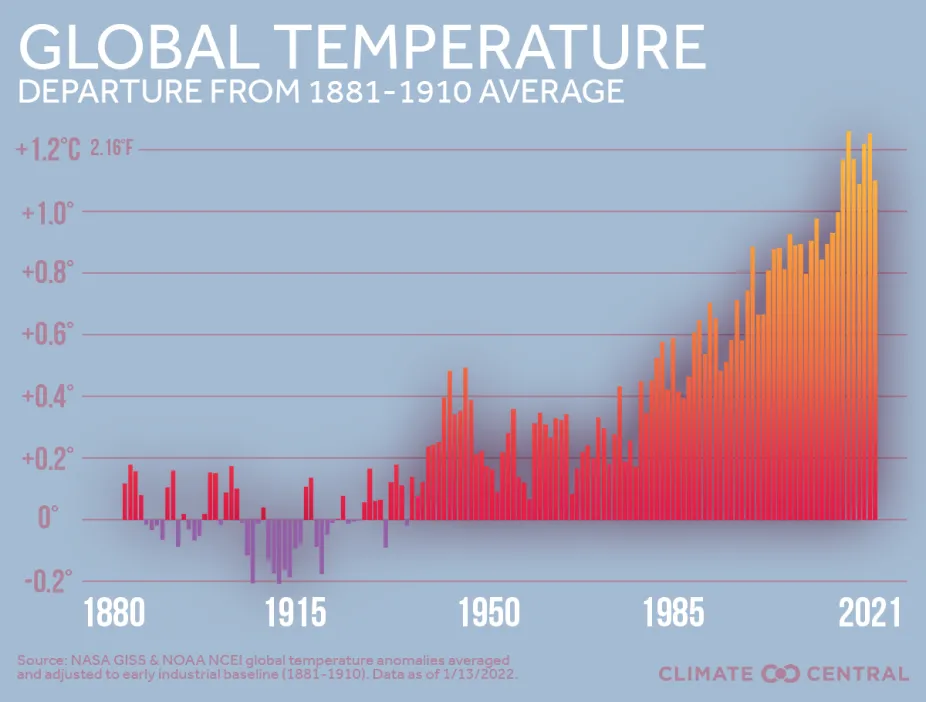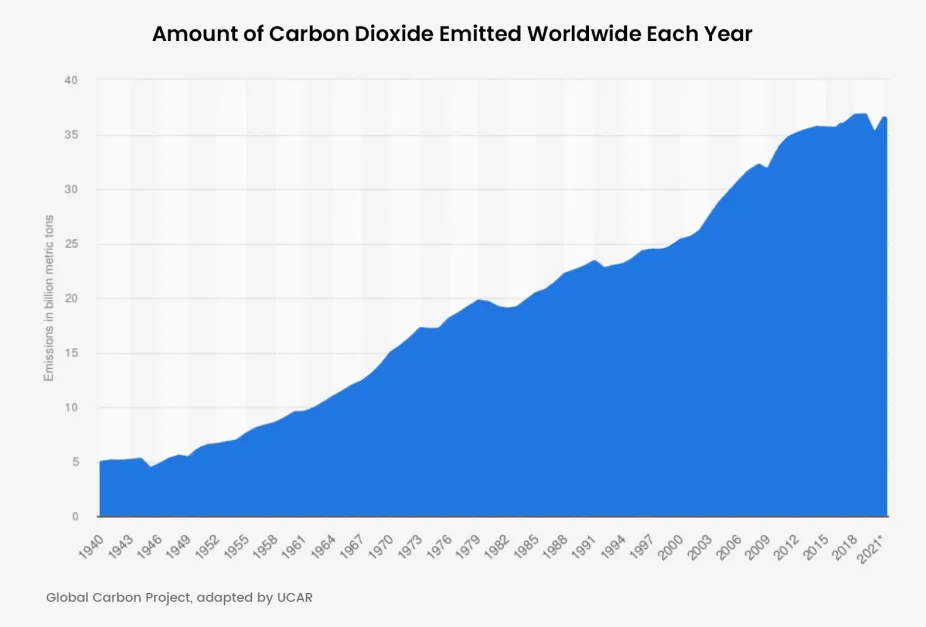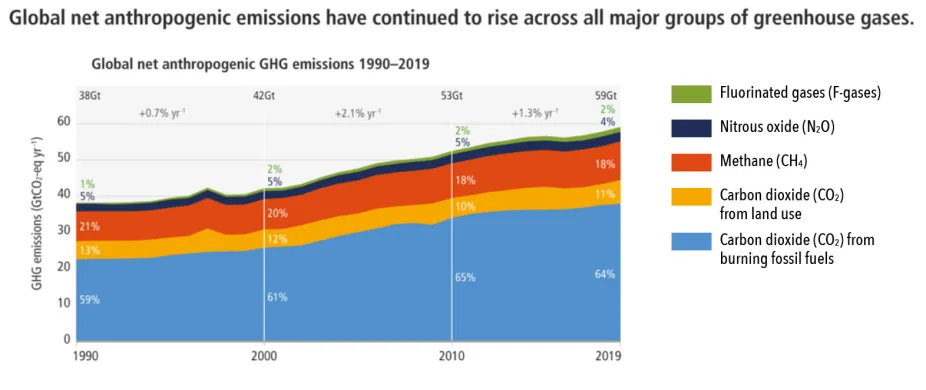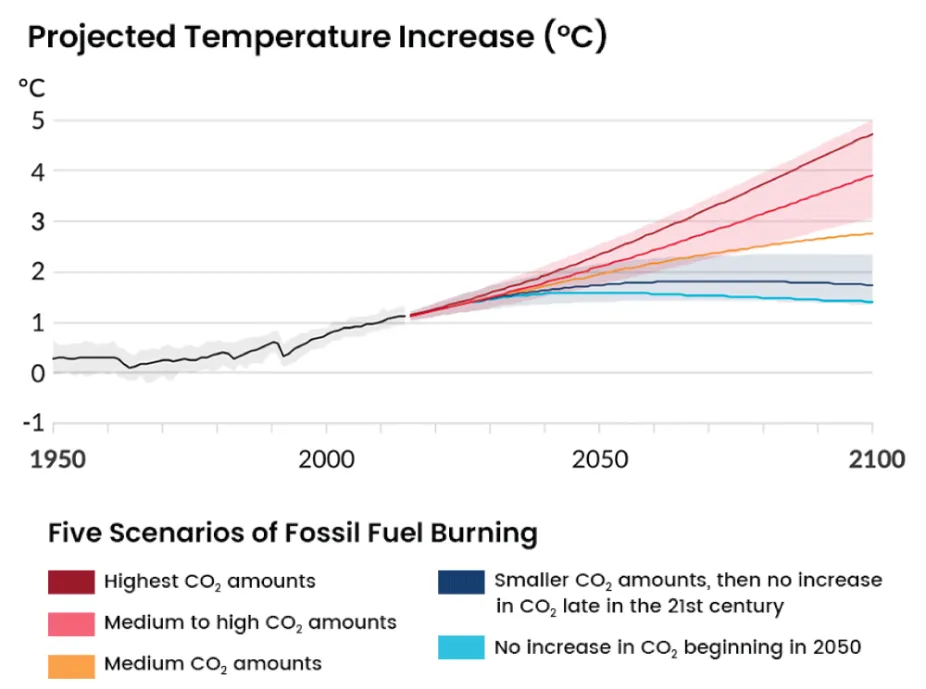Why Earth Is Warming
Since the 1880s, global average temperature has warmed around 1°C (~2°F).

The plot shows how much global annual average temperatures for the years 1880-2021 have been above or below the 1881-1910 average. Temperatures for years warmer than the early industrial baseline are shown in red; temperatures for years cooler than the baseline are shown in purple.
Climate Central (graphic); NASA & NOAA (data)
For more than 100 years, air temperature has been measured by weather observers all over the world. Averaging these daily measurements over a whole year let us see long-term trends instead of short-term weather events. And the long-term trend is that Earth is warming over time. Data collected from weather balloons (since the 1930s) and satellites (since the 1970s) also shows warming of Earth's climate.
- Learn the details of how global average surface temperature is calculated at the Calculating Global Climate Explainer.
- For an overview of how Earth's temperature is measured, check out How to Measure Global Average Temperature in Five Easy Steps.
Temperature is warming because the amount of heat-trapping gases in the air is increasing.

Since 1958, scientist Charles Keeling and others have measured the amount of carbon dioxide in Hawaii's atmosphere. The yearly fluctuations in carbon dioxide are due to seasonal plant growth, while the overall rise in carbon dioxide over many years is due to a combination of fossil fuel burning, deforestation, and cement production.
L.S. Gardiner/UCAR
In 1958, Charles Keeling started taking daily measurements of the amount of carbon dioxide, a heat-trapping greenhouse gas He wanted to study the seasonal cycle that drives carbon dioxide higher when plants are dormant during Northern Hemisphere winter and lower in the summer when plants are taking carbon dioxide out of the air through photosynthesis. But Keeling found an unexpected change over time – that the total amount of carbon dioxide was increasing year after year.
The amount of heat-trapping gases has increased because of the greenhouse gases we've released into the atmosphere.

The plot shows that annual carbon dioxide emissions have mostly increased over time, from 1940-2021. The slight dip in the numbers in 2020 corresponds to less carbon dioxide emissions during the lockdowns associated with the COVID-19 pandemic.
Global Carbon Project
Driving cars that burn gasoline and making electricity by burning coal and gas releases carbon dioxide and other greenhouse gases into the atmosphere. Curing of cement emits carbon dioxide, too. Our landfills and farm animals also cause greenhouse gas emissions. Since the late 19th Century, when factories powered by coal became common, the amount of carbon dioxide released into the atmosphere each year has increased. The graph above shows how emissions have increased over time. Carbon dioxide can stay in the atmosphere for a long time, so emissions year after year add up. To get the amount of carbon dioxide in the atmosphere to stop increasing will take a decline in emissions similar to the increase since the 1950s. Greenhouses gases such as carbon dioxide trap heat in the atmosphere that was on its way out to space, causing Earth's greenhouse effect to grow more intense, warming the climate.
Changes in the way land is used also have an impact on climate. For example, when forests are cut down, less carbon dioxide can be taken out of the atmosphere. Agriculture also adds greenhouse gases to the atmosphere. Farm animals release methane, a particularly strong greenhouse gas, as they digest food. Factory-made fertilizers release nitrous oxide, another strong greenhouse gas into the atmosphere.

The graph shows human-caused emissions over time for individual greenhouse gases. Carbon dioxide (CO2) from fossil fuel use and industry is the single largest contributor to total emissions at 64%, while CO2 from land use change and forestry accounts for 11% and methane (CH4) contributes 18%.
IPCC Working Group III, 2022
There are natural factors that can change Earth’s temperature like sunspots and volcanic eruptions, but these factors aren’t responsible for current warming. Scientists learned this by running models of the Earth system to simulate what our world’s temperature would be like over the 20th century both without human influences and with human influences. Because computers don’t know what actually happened over that time, the models consider only the factors that might affect climate and not any data about what actually happened. They found that, in fact, it would not have warmed over the 20th century and may even have cooled a bit if we hadn't been adding greenhouse gases to the atmosphere.
If we keep emitting greenhouse gases, climate will keep warming.

The amount of climate change by the end of the century depends on decisions we make today. If we reduce CO2 amounts to stop increasing after 2050, global average temperature will increase from 1-1.5°C, and this is considered a best case scenario (blue line in graph). If we don’t reduce CO2 and the amounts continue to increase, the worst case scenario warming will be 4.5-5°C (red line in graph).
IPCC Working Group I, 2021
How much climate change we experience depends on how quickly we act during this century. If we continue to emit greenhouse gases, we'll see more far more warming during this century than we saw over the past century according to projections from Earth system models. For scenarios with higher CO2 amounts, global average temperature is expected to increase between 3 and 5.5° Celsius (5.4 to 9.9° F) . The good news is that this doesn't have to happen. If we find ways to spew far fewer heat trapping gases into the air, global average temperature will increase about 1 to 1.5° Celsius (1.8 to 2.7° F) this century. Although we will still need to adapt to changes resulting from a warmer world, actions now would help keep Earth a livable place.
Next, read about how warming is affecting other aspects of our climate like precipitation, as well as the ocean, ice, ecosystems, and health.